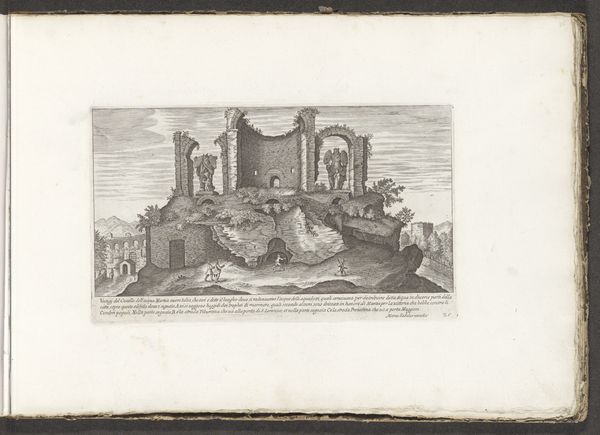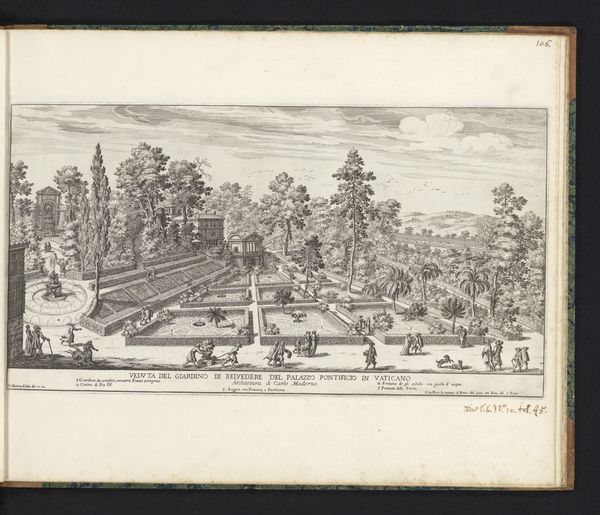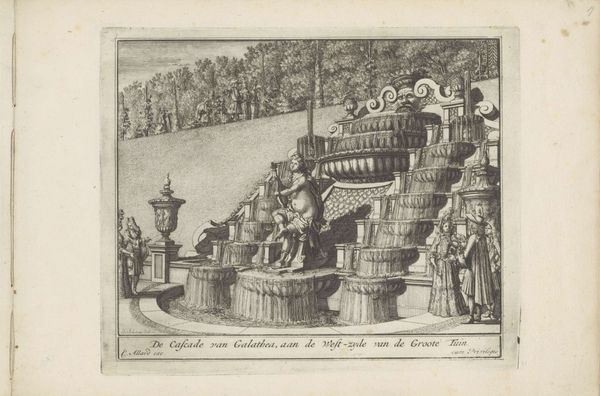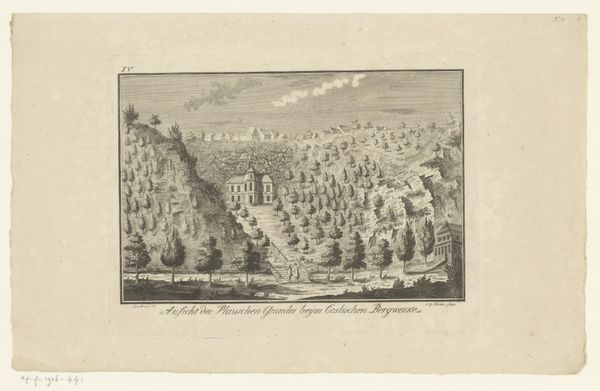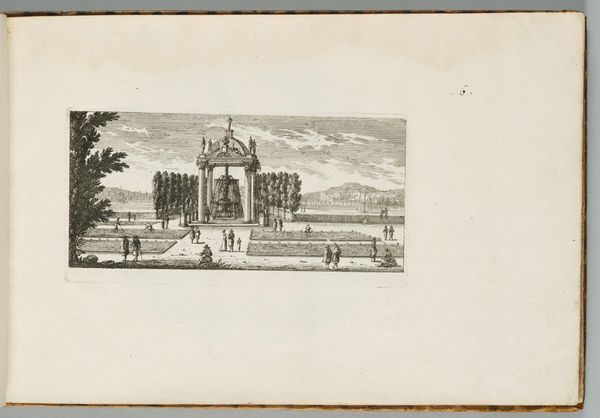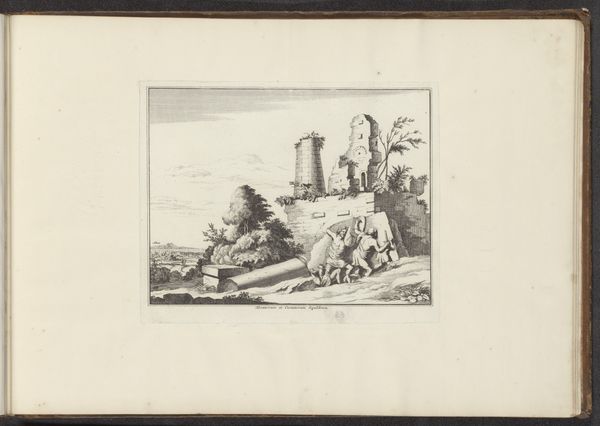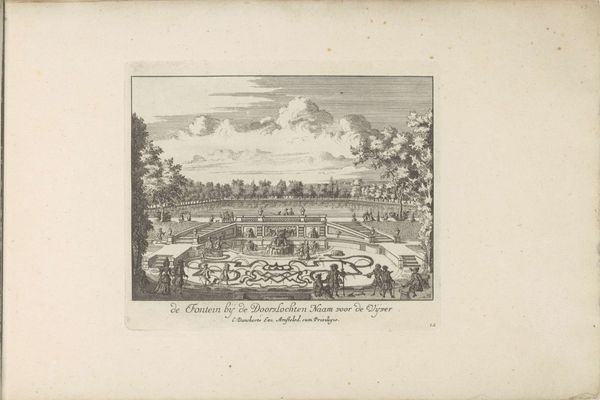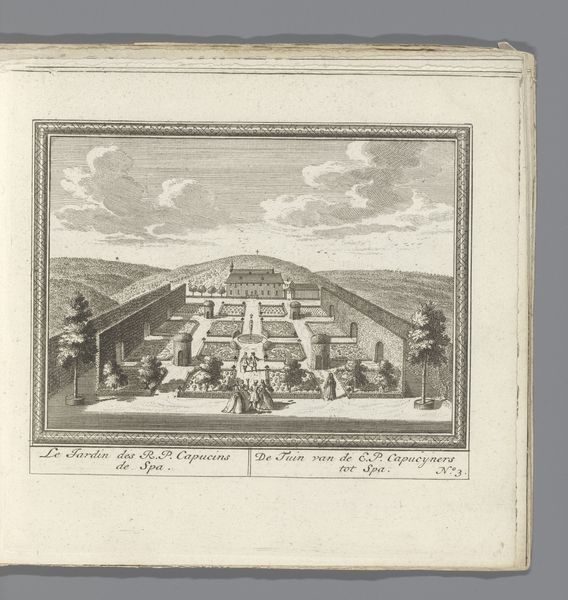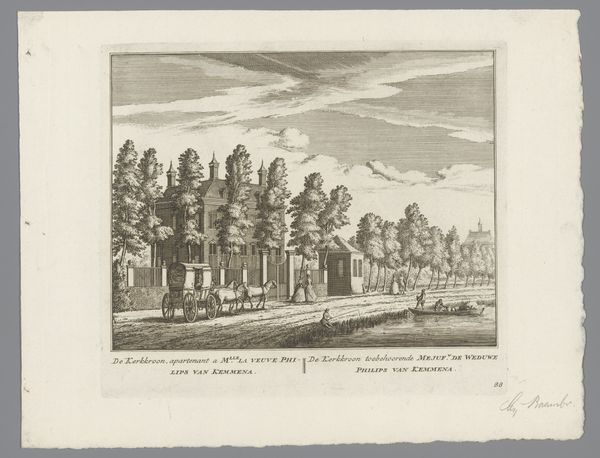
print, engraving, architecture
#
baroque
# print
#
landscape
#
engraving
#
architecture
Dimensions: height 140 mm, width 179 mm
Copyright: Rijks Museum: Open Domain
Editor: Here we have Cornelis Danckerts’ engraving, "Narcissus cascade in de tuin van Paleis Het Loo," dating between 1696 and 1718. It’s quite striking in its architectural precision, depicting a fountain with figures and onlookers. The details are incredible. What do you make of this work from a formal perspective? Curator: The visual construction of the engraving presents an ordered, hierarchical structure. Notice the carefully delineated lines of the cascade itself, echoed in the precisely positioned topiary and figures. There is an implied balance between the architectural components, mirrored with almost perfect symmetry along a vertical axis. This balance contrasts interestingly with the flowing water, a dynamic element rendered static through engraving. Editor: So you're seeing the order and balance as key elements? Curator: Precisely. The use of line defines the form. How do you think the formal elements here affect our viewing experience? Editor: Well, the details certainly demand attention; the way the water is depicted with tiny lines is captivating. But that rigid structure also makes it feel quite formal, even a bit detached from nature, despite depicting a garden. Curator: A keen observation! Do you think the rendering flattens depth, or do you feel a sense of dimensionality? Editor: I’d say there is definitely flatness, creating almost a stage-like setting for the people and cascade. Curator: Exactly. The artist appears primarily interested in presenting a constructed space, celebrating architectural form and geometric arrangement. Consider how line, shape, and symmetry interplay to construct a vision of idealized space. Editor: This focus on composition has truly opened my eyes, and helps move the architecture in the work to the forefront! Curator: Indeed. The interplay of forms contributes significantly to our understanding and aesthetic engagement with this baroque piece.
Comments
No comments
Be the first to comment and join the conversation on the ultimate creative platform.
